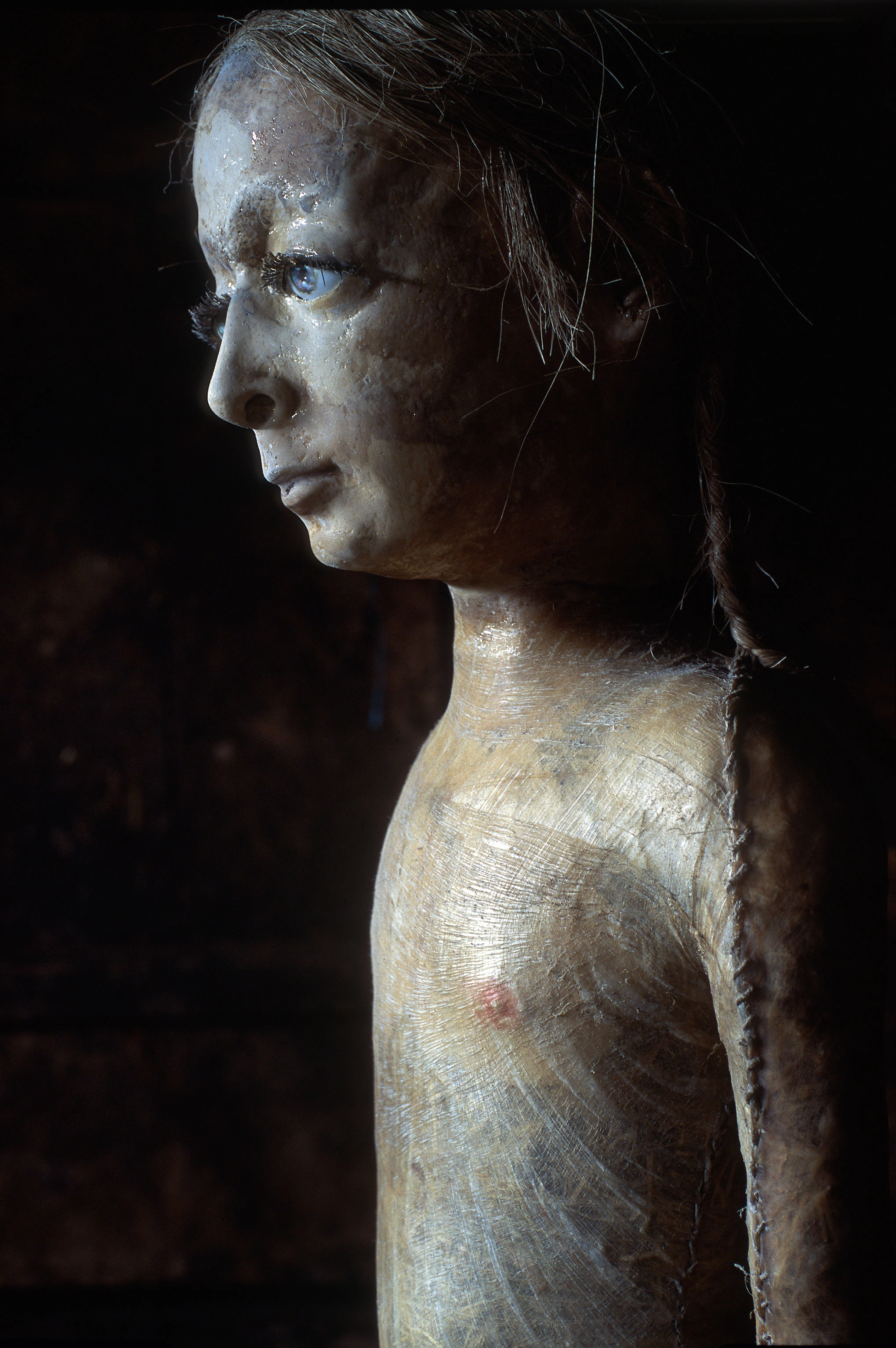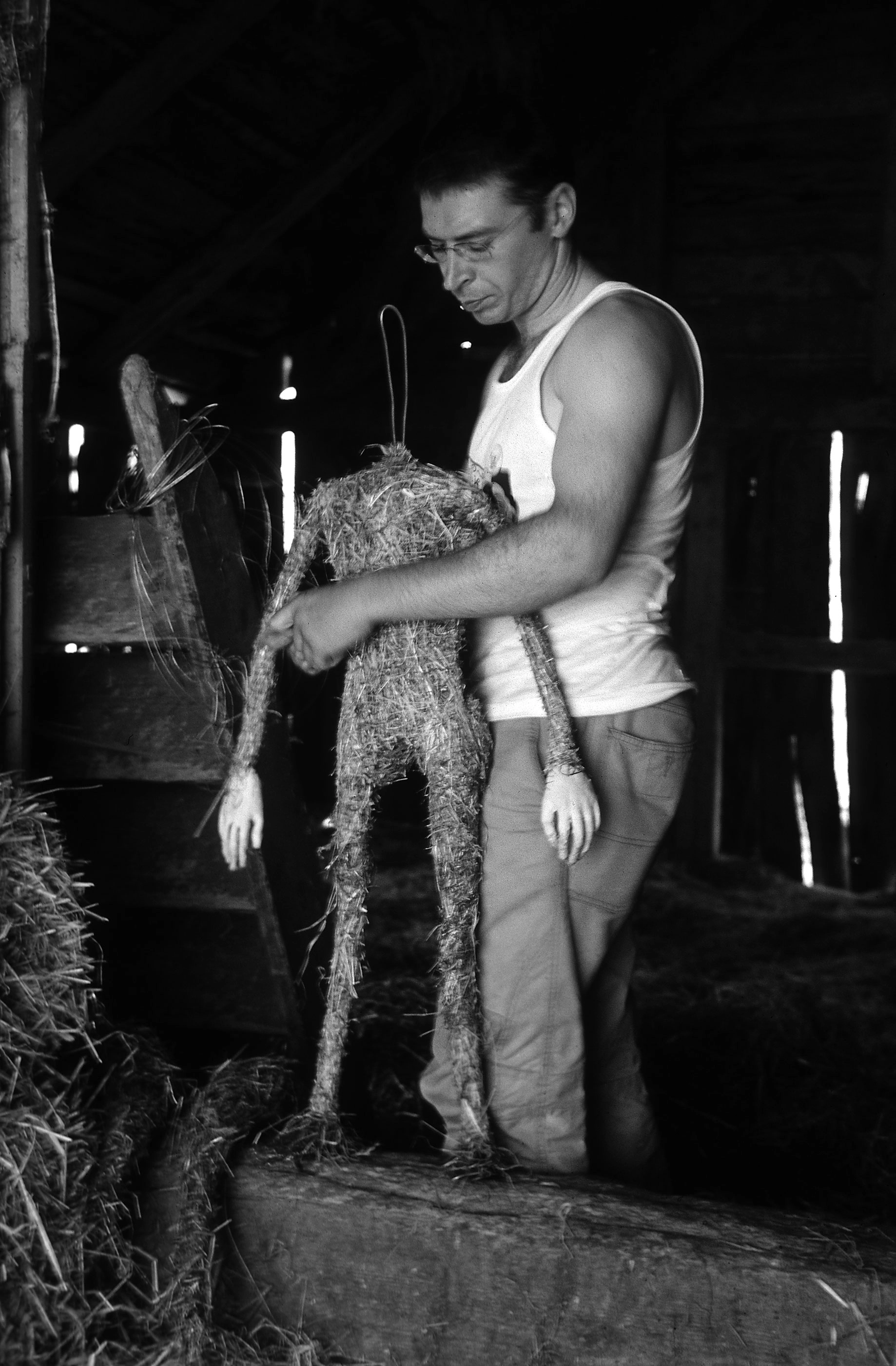When I visited Paweł Althamer in Warsaw and showed him Otto Meyer-Amden’s portraits of children, he responded by telling me about the Polish writer and artist Witkacy (1885–1939). Stanisław Ignacy Witkiewicz, alias Witkacy, whose plays met with scant success in his lifetime, is now considered an important exponent of Polish Modernism and was deeply admired after the war, especially by the artist and playwright Tadeusz Kantor. Uninhibited and eccentric, Witkacy painted prolifically in the interwar period. To earn money, he painted portraits often under the influence of drugs. These fantastical, hallucinogenic, and entirely non-academic works, on which he scribbled commentaries, such as the type of drugs taken while painting them, recall the drawings of the French actor, writer, and artist Antonin Artaud.
When Althamer came to Amden to acquaint himself with the location on 18 November 2000, he gave me a monograph on Witkacy by Irena Jakimowicz.1 Deer crossed our path several times while we were out walking through the snow. The animals, appearing one moment and disappearing the next, made a great impact on Althamer and became the point of departure for his installation. Initially, he planned to create a sculptural piece hidden away in the woods nearby. While spending the summer of 2001 in Amden, he ultimately chose to make the installation Weronika, comprising a life-sized sculptural likeness of his daughter Weronika alongside a number of drawings and cut-outs that she did while in Amden. Like the sculpture made for his degree project at the Warsaw Art Academy, Althamer used organic materials, some of which he found on site: hay and wiring for the body and hemp for the hair. He had brought the skull, mother-of-pearl eyes, and bovine gut for the skin with him from Warsaw. The artist also brought his entire family along with him when he came to Switzerland. He told me when he first visited Amden that all the travelling he had to do for exhibitions had caused some tension in the family, since it entailed being away from his wife and three children for long periods. To avoid conflict, therefore, he had decided to include the whole family in his work this time. During the week prior to the exhibition, the artist would spend the afternoons outdoors, weather permitting, with his then five-year-old daughter. He worked on her portrait, while she drew and played nearby on the meadow in front of the barn.
Althamer works subjectively, absorbing the situation and using the simplest artistic and technical means available. Implementing an idea — mostly within a very short period of time — and exhibiting the result are often inseparable to him. It never ceases to interest and amaze me how skilfully he translates knowledge and experience from his everyday life into art. Althamer is an artist in real time.
In his review of Paweł Althamer’s exhibition in Amden, Philipp Kaiser writes, “Paweł Althamer does not refer directly to Otto Meyer-Amden’s well-known life drawings of boys and girls, although they do nonetheless form an invisible filter that evokes the latent sexuality of these images. Because the little girl’s appearance also seems androgynous, it correlates with the utopian allegory of childhood innocence that was widespread at the beginning of the last century. Being autonomous, site-specific, and rich in contextual implications, Weronika condenses complex reflections on images of the self and others, whose impact is clearly felt in the sensual and physically concrete encounter.” 2
– Roman Kurzmeyer
- Irena Jakimowicz, Witkacy, malarz, Warszawa: Auriga, Wydawnictwa Artystyczne i Filmowe, 1985.
- Philipp Kaiser, “Weronika: Paweł Althamer in Amden,” in Kunst-Bulletin 9 (2001), pp. 22–25.

 Images
Images
 Info
Info





 Next Exhibition
Next Exhibition